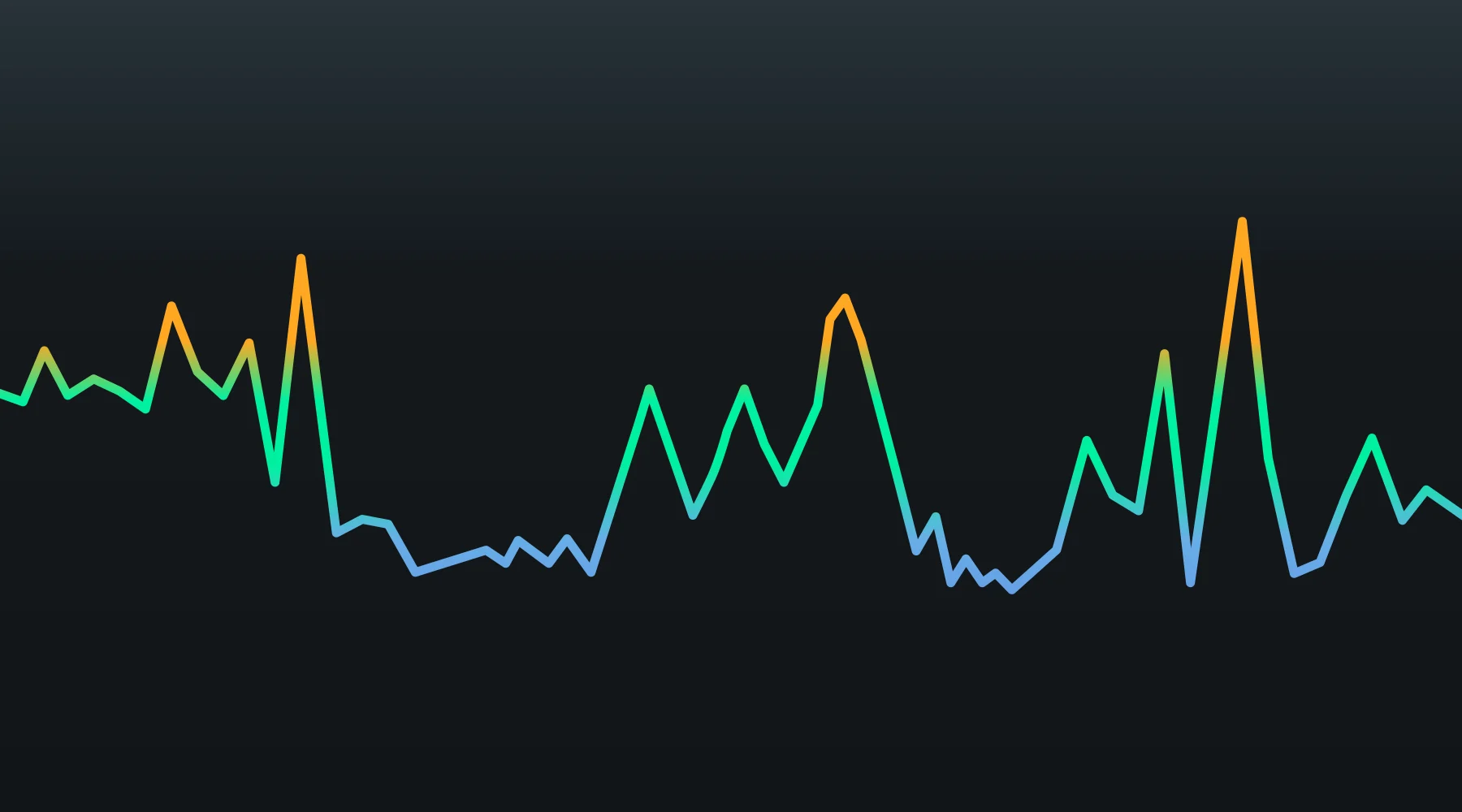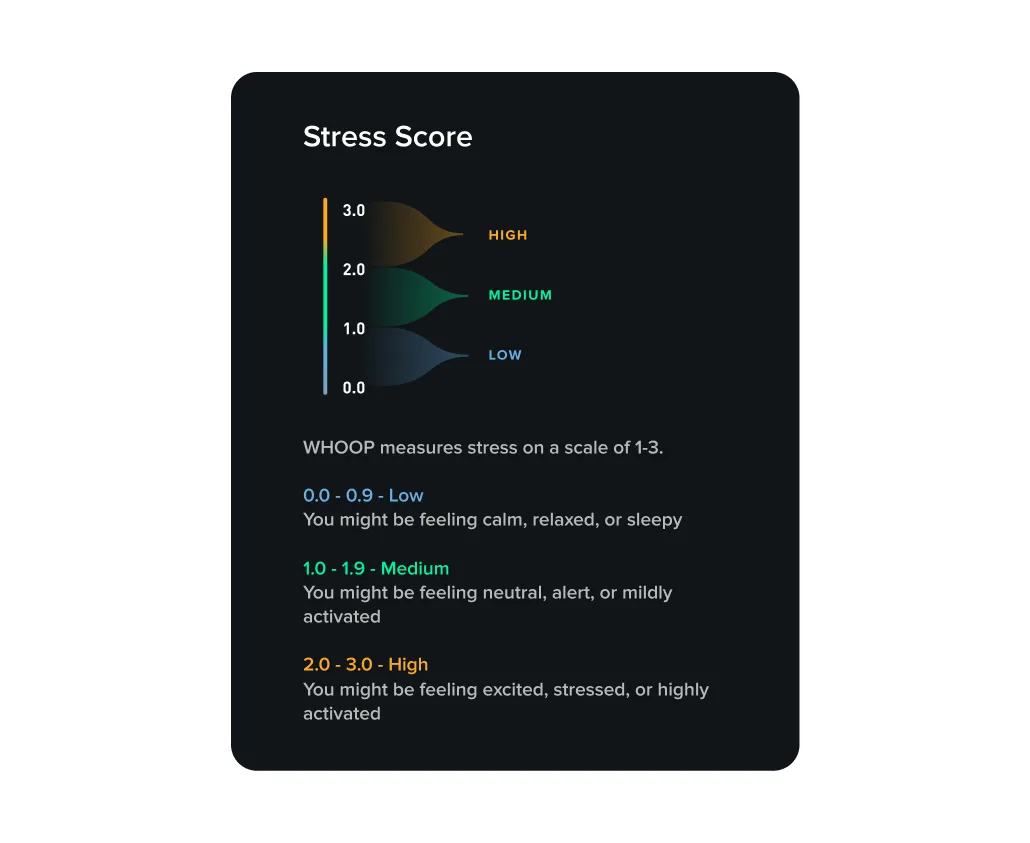Topics
- Article
- App & Features
- Stress
Introducing Stress Monitor: A New Way to Monitor & Manage Stress

Stress Monitor from WHOOP can now track your stress level in real time, and provide science-backed breathing techniques to help manage it.
Stress is the body’s natural response to a physical or mental challenge. It can speed up the aging process, cause inflammation, and impact vital recovery processes. It’s more commonly known that stress can have these negative impacts on the body and brain, but healthy levels of stress can actually help improve your focus, memory, and overall performance.
Measuring Stress
Stress Monitor is able to give you a real-time stress score between 0 and 3 by measuring your heart rate and HRV and comparing that to your baseline. WHOOP also limits the impact exercise can have on your stress score by taking your motion into account, so you can understand whether you’re actually stressed or just exerting yourself physically. To develop an algorithm for measuring stress, WHOOP recruited participants into WHOOP Labs, a full-time research facility, to look at activities recorded by WHOOP members. The impact of stressful and relaxing activities on heart rate and heart rate variability were examined, as were the impacts of light physical activity, cold exposure, breathing, and cognitive challenges on heart rate and heart rate variability. The research showed that changes in heart rate correlated with changes in systolic and diastolic blood pressure, classic markers of stress. In addition to measuring stress in real-time, you can now see how your stress ebbs and flows throughout the day and over time, helping you spot patterns. View the trends in your stress over the last week, month, 6 months, and beyond. You can also see how activities, like running or breathwork map to your stress. To access Stress Monitor, head to the home screen in your app, scroll down, and tap on the Stress Monitor graph.

Managing Stress
Stress Monitor provides science-backed breathwork sessions developed to either increase relaxation or alertness. Why breathwork? It’s a proven and effective tool for stress management that can help support your overall well-being. In a randomized controlled trial, participants wore WHOOP to monitor their biometrics and were asked to perform different breathing exercises for five minutes a day over the course of one month. The study found that cyclic sighing was significantly better than mindful meditation at improving mood and reducing respiratory rate. Stress Monitor utilizes cyclic sighing (physiological sigh) and cyclic hyperventilation in two different customizable sessions. The increase relaxation session utilizes the cyclic sighing (physiological sigh) exercise to help you regulate a stressful physical or emotional response, or wind down. The increase alertness session utilizes the cyclic hyperventilation exercise to dial up your responsiveness to external stimuli and help you stay energized. After a breathwork session is completed it autosaves as a breathwork activity, you can then tap into your saved activity to see insights like how the session changed your stress score, and the varied rates in your inhales, exhales, and breath holds.
Using Stress Monitor
Stress can be self-reported based on how you feel, or measured with biomarkers, like cortisol.
Stress Monitor measures your heart rate and heart rate variability (HRV) in the moment as indicators of your physiological response to stress. Your reading is then compared to your personalized baseline from the past 14 days, and any motion is taken into account to help distinguish known stressors, like exercise, from other stressors. Stress Monitor then identifies your stress levels on a scale of 0 (low stress) to 3 (your peak stress level).
To better understand the psychological experience of stress, you can use the WHOOP Journal. You can log your perceived stress levels and WHOOP will analyze how self-reported stress effects your resting heart rate, heart rate variability, recovery, and duration of each stage of sleep.
Over time, Stress Monitor is meant to help members understand how the body and mind are connected, and identify which situations trigger a physiological response. Stress Monitor will continue to evolve based on feedback and support from members as they unlock their stress.

Please note that WHOOP does not provide medical advice and its services are not intended to be a substitute for advice from your doctor or other medical professionals. Features are not intended to diagnose, monitor, treat, cure, or prevent any disease or condition, including mental health conditions. No conclusion about your mental health should be drawn from any information provided by WHOOP. If you have concerns, discuss them with your doctor or other medical professionals. All content is for general informational purposes only.